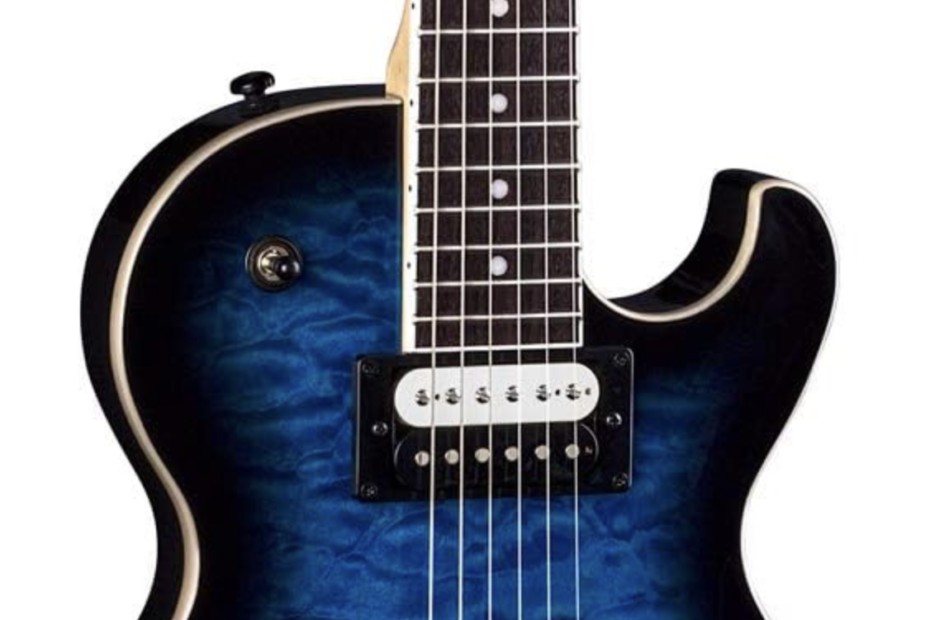As a seasoned guitarist and dedicated blogger, I often find myself diving into the rich and diverse world of guitars. One such fascinating realm is that of resonator guitars. These unique instruments, known for their distinctive sound and striking appearance, offer a world of musical possibilities. In this article, we will explore the history, types, and notable features of resonator guitars, along with how they can be integrated into your musical journey.
A Brief History of Resonator Guitars
 Resonator guitars were developed in the late 1920s by John Dopyera, who sought to create a louder guitar that could compete with horns and percussion instruments in jazz and blues bands. The invention of the resonator guitar led to the creation of two primary types: the tricone and the single-cone resonator.
Resonator guitars were developed in the late 1920s by John Dopyera, who sought to create a louder guitar that could compete with horns and percussion instruments in jazz and blues bands. The invention of the resonator guitar led to the creation of two primary types: the tricone and the single-cone resonator.
For those interested in the evolution of guitar technology, our review of the Fender Electric Guitar Models provides insights into how these instruments have advanced over the years.
Types of Resonator Guitars
- Tricone Resonators: These guitars feature three small, connected resonator cones. They are known for their complex, rich tone and sustain. Tricone resonators are often preferred by blues and slide guitarists.
- Single-Cones: These can be further divided into biscuit bridge and spider bridge resonators. Biscuit bridge resonators produce a punchy, bluesy sound, while spider bridge resonators, with their more delicate construction, offer a smoother, mellower tone.
For guitarists looking to explore various effects and enhance their resonator guitar experience, check out our reviews on Best Multi-Effects Pedal for Guitar and 7 Best Looper Pedals for Guitar.
Notable Features and Playing Techniques
Resonator guitars stand out due to their metallic resonator cones, which amplify the sound. These guitars are often made of metal or wood and can be played with a slide for a distinctive, expressive sound. Techniques like palm muting and guitar tapping can be effectively used with resonator guitars to create unique musical textures. For more on these techniques, read about Unlocking the Power of Palm Muting and Guitar Tapping Technique.
Integrating Resonator Guitars into Your Music
Whether you are a blues enthusiast or a country music aficionado, resonator guitars can add a unique flavor to your music. For those looking to broaden their musical horizons, mastering various guitar chords is essential. Our comprehensive guide on Guitar Chords covers everything from basic to advanced techniques, ensuring you have the skills needed to make the most of your resonator guitar.
Additionally, consider exploring different guitar models and brands to find the perfect match for your style. Reviews on guitars like the Martin J-40 and the Taylor GS Mini offer valuable insights into their unique features and sound qualities.
Enhancing Your Resonator Guitar Experience
To get the most out of your resonator guitar, investing in quality accessories and equipment is crucial. Using a good tuner ensures your instrument is always in perfect pitch. Check out our article on The Best Guitar Tuners for Perfect Pitch in 2024 for recommendations.
Moreover, experimenting with different pedals can open up new sonic possibilities. The Zoom G5n Multi-Effects Processor and the Electro-Harmonix Voice Box are excellent choices for adding depth and versatility to your sound.
Conclusion
Resonator guitars offer a unique blend of history, craftsmanship, and distinctive sound that can enhance any guitarist’s repertoire. Whether you’re an experienced player or a novice exploring new territories, integrating a resonator guitar into your collection is a worthwhile endeavor.
For more in-depth reviews and guides on guitars, pedals, and playing techniques, visit our articles on PRS Paul’s Guitar 10 Top, Ibanez Joe Satriani Signature, and Mastering Guitar Tone. Happy playing!
